All about barnhouses
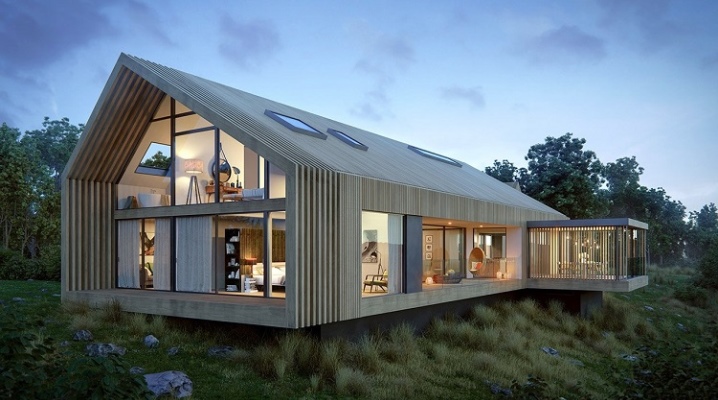
The developed industry of our time is theoretically designed to contribute to the maximum variety of the same interiors, but in practice it often happens completely the opposite - some unique, original things and styles are lost, and instead we use global trends that are absolutely the same on any continent. So, we live in approximately the same type of dwellings, strictly limiting ourselves to a dozen popular interior styles, and then, half of them are, rather, examples of rather rare pretentiousness. It's also good if our houses are at least cozy, and are not the result of a blind pursuit of fashion.
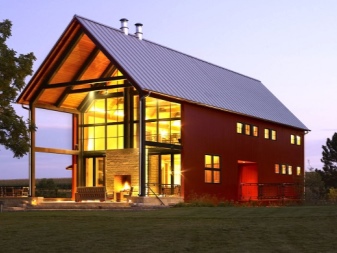
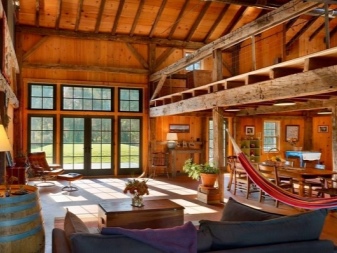
In fact, there are not so few people in the world who criticize modern society for striving to follow certain opinion leaders. If you are tired of seeing the same houses and really want to stand out, you should pay attention to such a style as a barnhouse. Of course, even with him you will not be one hundred percent original in the world, but on the other hand, the estate will at least be noticeably different from all the neighbors.
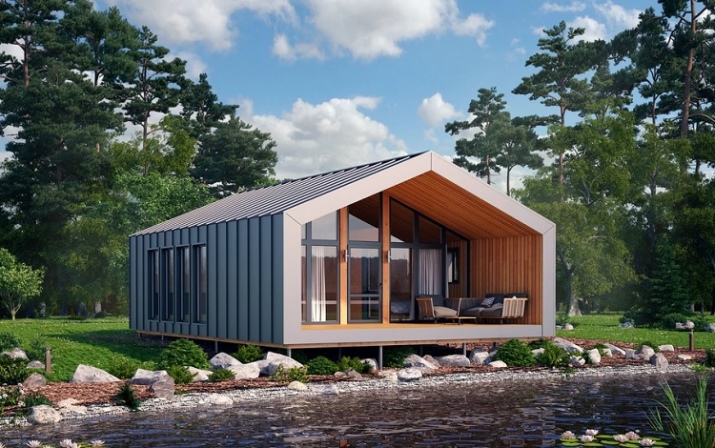

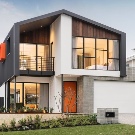


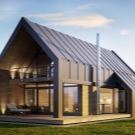
What it is?
It's worth starting with the fact that in a full-fledged barnhouse style there can only be houses - such a style is completely unsuitable for apartments, and there is a specific reason for that. It lies in the fact that "Barnhouse" translated from English is "a house converted from a former barn." The stylistic direction requires compliance with design differences not only in the interior, but also in the exterior, and the owner, who tried to decorate the apartment in the style of a barnhouse, will inevitably deviate into something like a classic loft mixed with country.
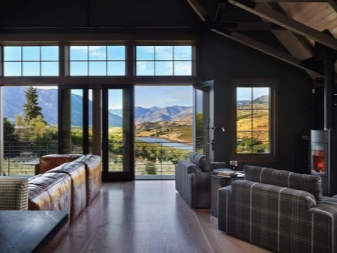
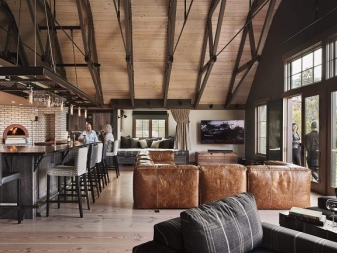
In fact, the barnhouse is certainly not something entirely new, and designers usually describe it as a mix of three other popular styles. They should bring the following notes to the overall picture:
- loft - classic features of "alteration", with a minimum of decorations and decor, large spaces in the absence of logical interior partitions and rooms, the emphasis in which is on functionality, and not on transcendental aesthetics;
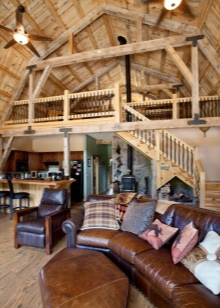
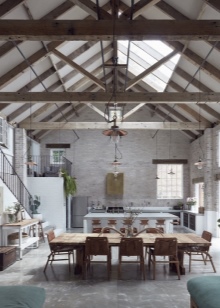

- minimalism - the use of predominantly natural materials for decoration without any high-tech, strict geometry without convolutions and inappropriate attempts to embellish;

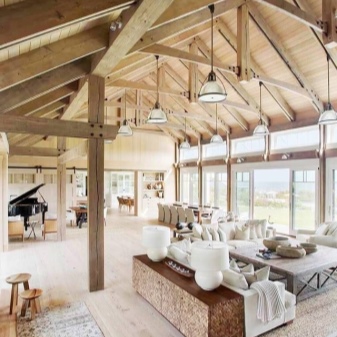
- bio-tech - the perception of the building as a superstructure over nature that does not interfere with the normal functioning of the living environment, with the most environmentally friendly and conscious approach to flora and fauna.
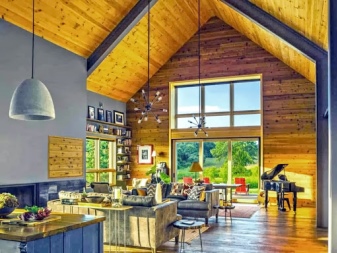
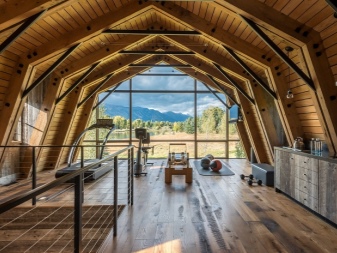
A typical barnhouse is usually erected strictly in straight lines, without any architectural frills, most of all it resembles a rectangle. Construction technology implies the presence of a rigid frame around which walls are erected. Since the barn originally served as a barn, it needs a volumetric doorway, and in some cases even double doors are used.
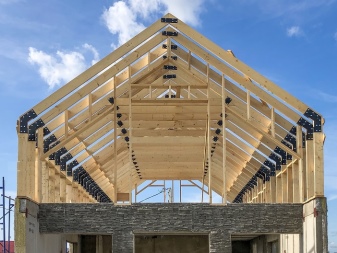
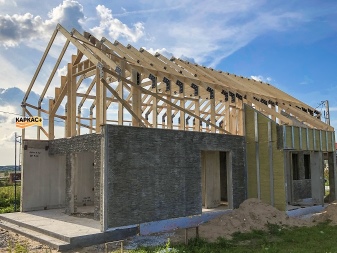
To expand the useful space and create a recreation area in a typical village sense, cozy open-type wooden terraces are attached. The roof can be either gable or pitched, while overhangs are usually not used - the edge of the roof at an angle goes into the wall. It is customary to sheathe a building from the outside without excessive pathos - as a rule, sheet metal or a facade board is taken for the role of external decoration.
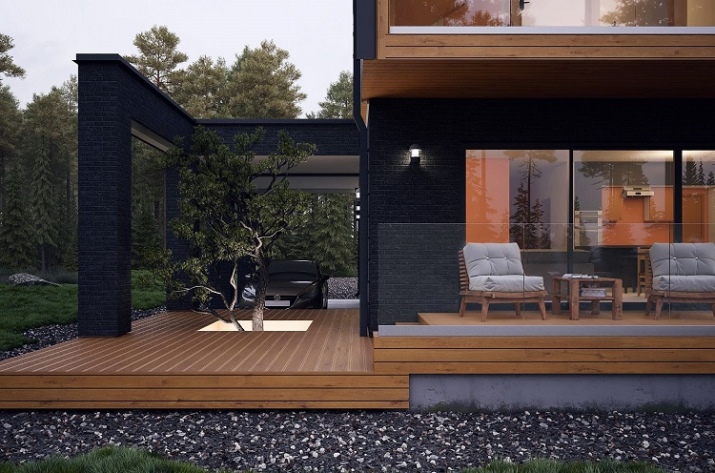
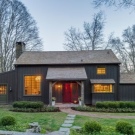
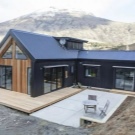
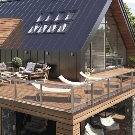
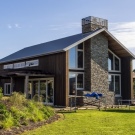

There are no particular internal partitions, because zoning is carried out using furniture, stairs and even a banal difference in floor levels.
The advantages in houses built in the barnhouse style are most often seen by young people who are sickened by the excessive activity and pollution of modern megacities. For their families, this is an opportunity to take care of their future, taking their homes outside of traditionally polluted urban areas and living in peace, and not under the constant noise of the city. Life in such a house is romantic in its own way, it is fundamentally different from today's wear and tear and an uncontrollable pursuit of status and money, which will never be enough.
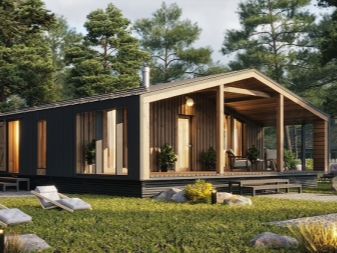
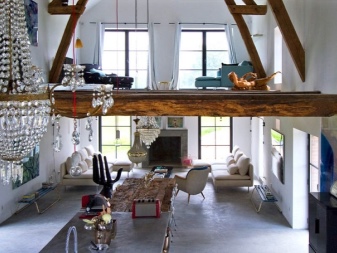
For the same reason a barnhouse can also be interesting for older people who rarely like unnecessary fuss and, in principle, gravitate towards living in the seclusion of the countryside. The disadvantage in this style can be seen mainly by introverts who prefer complete privacy of the office, because the barnhouse with its missing partitions will not allow you to be left alone with yourself. However, this is a strictly pastoral, family style, which assumes that children do not make noise and interfere, but develop systematically.
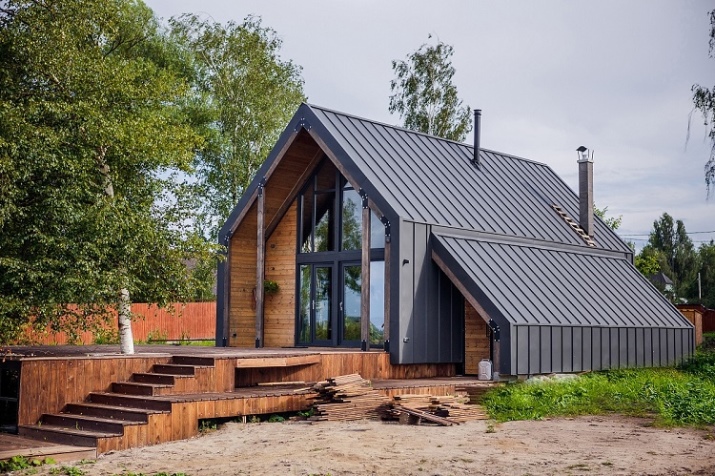
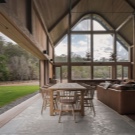
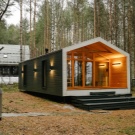

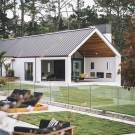
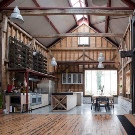
Layout and projects
Drafting a full-fledged barnhouse project is a simple and complex task at the same time. One side, even a person who is far from drawing up drawings can think over the layout - simply because there are really no interior structures here, the whole building on the diagram looks quite simple, which means that the plan cannot be too clever.
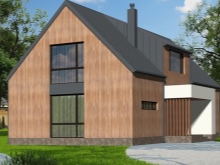
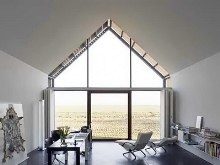

The subtlety, however, is that we are not designing a gym, but a cozy dwelling, where it is necessary to carefully arrange furniture and precisely designate the zoning of the space, while many of our fellow citizens are still not used to the fact that zones can be divided not only by walls. That is why, in pursuit of the comfort of living in the future house, many potential owners reasonably decide to turn to professional designers or even order a modular house kit from SIP panels for self-assembly, choosing a project from those that were previously developed by the design bureau.

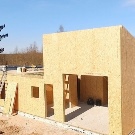
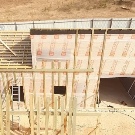

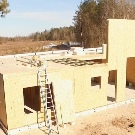
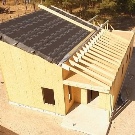
The peculiarity of the barnhouse is that it does not put forward any requirements regarding the size of the building. - this is not a Japanese style that looks good only in tight spaces, and not a palace baroque that does not tolerate cramped spaces. Determining the parameters of the house, the owner is guided only by his own needs - it can be a one-story mini-cottage with a total area of no more than 40 square meters, and a large two-story house with a terrace, which itself is comparable in size to a small house.
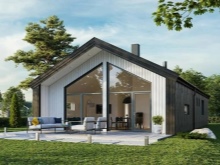
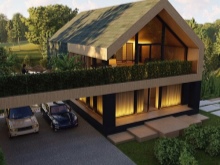

As a rule, there is no attic in a barnhouse - being the successor to the practical loft, this style simply does not allow for the possibility of a huge space filled with all kinds of rubbish and visited by the owners only from time to time. When people talk about a house with 2 floors, they usually mean that the upper one will be equipped with an attic, which can be complemented by a cozy balcony with a nice view of the surrounding area.
Given a good overview, the correct design of a barnhouse should concern not only the building itself, but also the adjacent territory - often you cannot do without full-fledged landscape work.
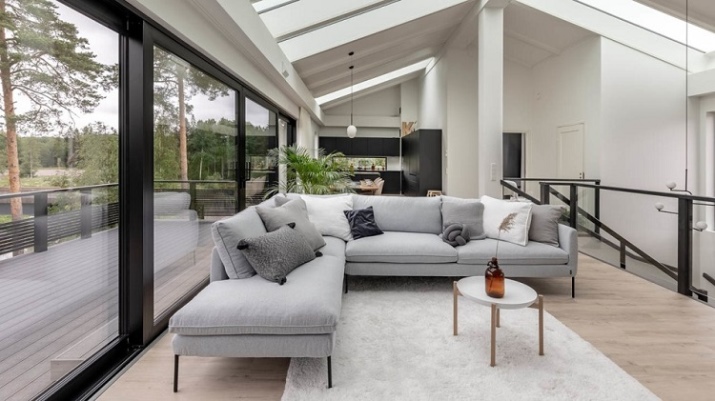
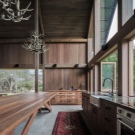
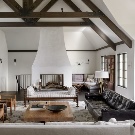
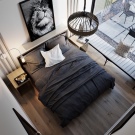
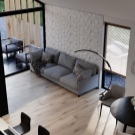

It is for the sake of to make the attic more spacious and comfortable, the roof is often made single-pitched and with a rather slight slope - it never reaches the level of the ceiling of the first floor. The barn style also does not preclude a flat roof, but it is more often inherent in one-story projects and is also often used as the same outdoor dining area. In the cultures of many peoples of the world, houses were widespread, in which animals were kept in the same building where people lived, but behind a capital partition or on the first floor, "resettling" the main owners of the building upstairs.
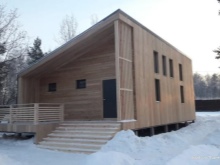
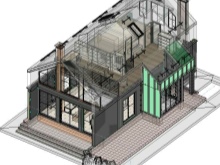
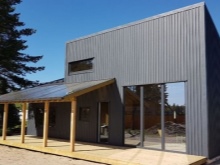
A modern barnhouse, with all the imitation of a traditional rural barn, does not imply any animal husbandry, but wealthy modern owners living far from large centers of civilization must have an iron horse.
In the style under consideration, a separate building for a garage is usually not erected, instead, the space of the first floor is used, especially since the barn is characterized by huge doorways.
It should be noted, however, that for all the love for unbounded space and the absence of partitions, the garage in the barnhouse is nevertheless separated from the living area by full-fledged walls.
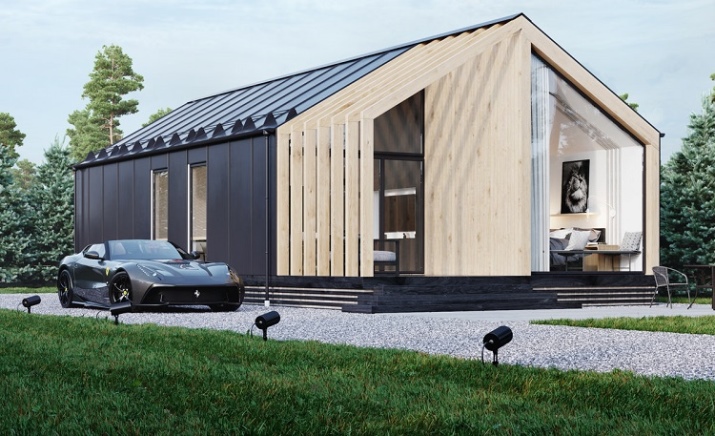
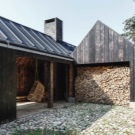

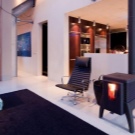
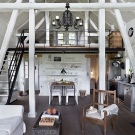
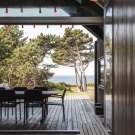
Considering the novelty of the barn style for our country, as well as the extreme simplicity of this style due to the absence of any significant decor, in most cases such houses are built precisely according to the so-called Canadian house system.
For the buyer, these are:
- the ability to save money on a drawing without ordering it, but choosing from the list of ready-made ones;
- overall savings in construction costs, since all parts are stamped according to ready-made patterns and assembled in the shortest possible time;
- waiting from the conclusion of the contract to the implementation of the project no more than several months.
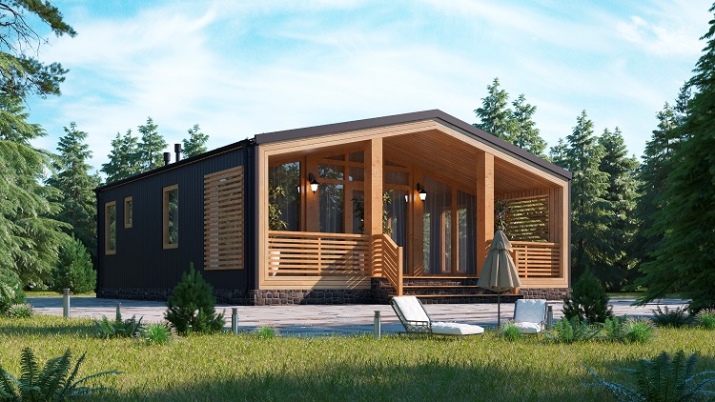
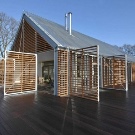
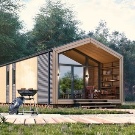
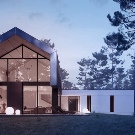
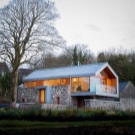
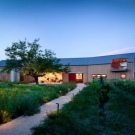
Development companies selling assembly kits for fast construction are largely guided by extremely simple and rustic cute barnhouses, so it is possible that in the coming years there will be many times more such houses in our country.


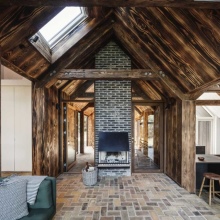
Materials (edit)
As we already understood, a barnhouse is not a style of interior decoration, but of architecture in general, so you should not be surprised that building materials for it are also selected of a certain type. Perhaps it is easy to assume that a house, which was supposedly built to fulfill household needs, a priori cannot contain too expensive and elite materials in its design, but we also do not forget that the key feature of the style is reliability and durability, which literally shines through even in the external the form of a building.
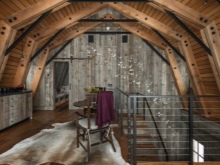
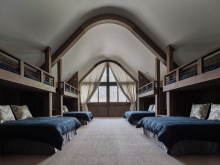
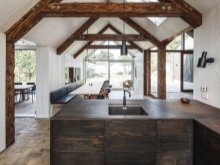
Globally, a barnhouse can be built from any material that is not too expensive in a certain area and at the same time gives the same notorious feeling of reliability. The first thing that comes to mind, of course, is the good old brick, but in fact there are projects from more economical, very light foam blocks and aerated concrete, and some people build rather cozy "barns" even from glued laminated timber.
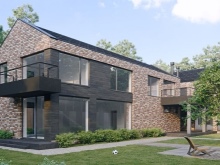
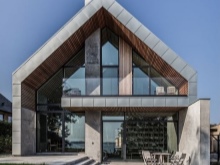

Although the same foam concrete and aerated concrete are usually not suitable for the construction of heavy buildings with a height of more than one floor, frame construction can be used for their use, when the masonry is carried out on top of a frame made of reinforced concrete.
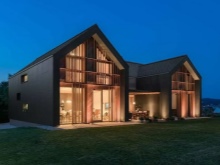

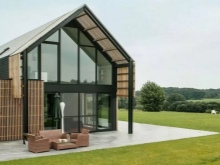
A flat roof is still very rare in barns, and a lean-to roof is also not so common. Much more common are gable roofs with a large slope, between the slopes of which there is a relatively small attic. Of course, such a disregard for the size of the attic is possible only if the barnhouse is built in the best foreign traditions - with a total area of at least 300 square meters, but our houses are usually a little smaller.
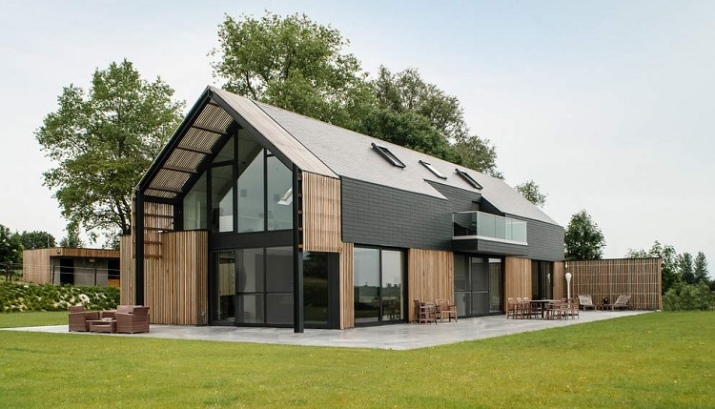
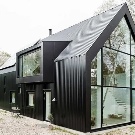


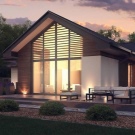

It is customary to cover the roof with a seam, soft roll roofing or tiles are also actively used, but you always need to choose the color of roofing materials wisely so that the whole project looks stylish and neat.
Although a brick or cobbled house would look really good even without external decoration, it is still customary to sheathe the facades of barns in a style very close to Scandinavian. There are not very many people in the northern part of Europe, therefore they do not lack natural materials, sheathing their homes from the outside natural stone, wood of various types, as well as metal or artificial panels that imitate natural stone.
Theoretically, a building can be painted in a single color, usually dark, or even black, which is good at least for its originality.
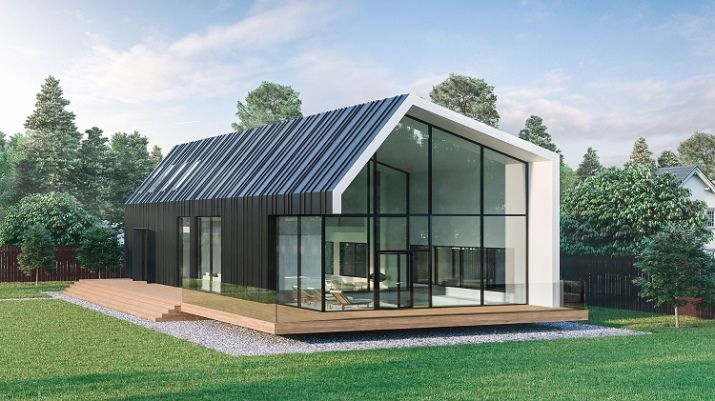
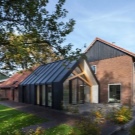
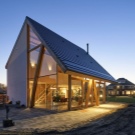
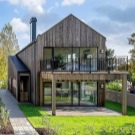
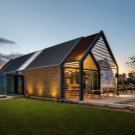
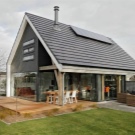
Although in our reality, not the most expensive materials are most often used for facade decoration, they can also save money, and for purely practical reasons. The fact is that a classic barnhouse offers a lot of natural light.
The same attic, if it is "classically" squeezed by a gable roof, due to the abundant lighting from the street, will seem a little more spacious, not to mention the fact that panoramic windows are sometimes much more interesting than a conventional TV or gadget. In some projects, especially those that are intended for construction in not the coldest regions of Russia, panoramic windows on the end walls will also be quite appropriate - in fact, the entire wall can be glass.

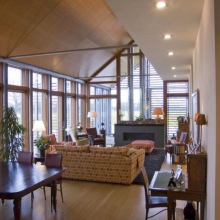
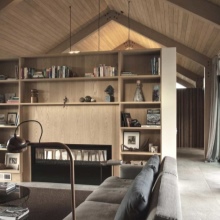
Interior Design
Above we said that the barnhouse can be very small, but in fact the original style does not say anything about this, and it is, rather, our desire to acquire at least a small dwelling, but our own. The original barnhouse is almost always a huge structure, which cost its owner relatively inexpensively precisely because it was at first a half-abandoned barn.
Although this style does not imply much decoration, but inside you should not be limited by anything. - all these hundreds of square meters represent almost the only room, and the household, if desired, may not interfere with each other simply because they are at a considerable distance from the other inhabitants of the building.
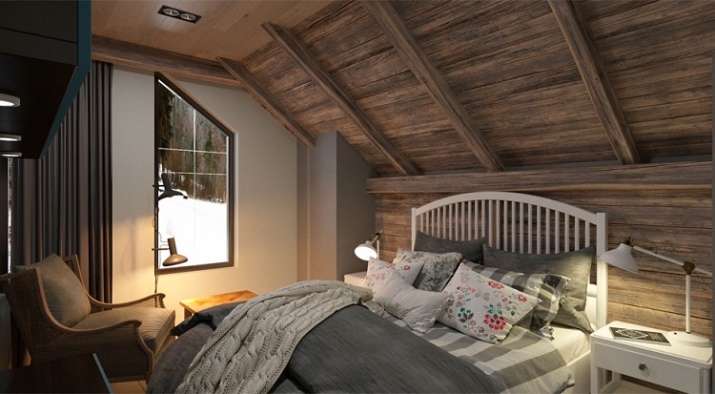
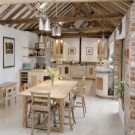
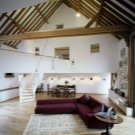
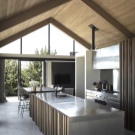
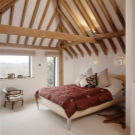
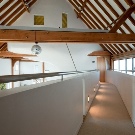
A modern barnhouse means saving not only money for buying a home, but time and effort to maintain order. An eco-friendly interior without any special frills is selected so that it does not need to be repaired regularly, and so that it does not even collect dust on itself. The walls inside the premises are finished with natural wood and stone, painted or covered with decorative plaster.
Thanks to this, all cleaning is limited to a one-time passage of the surfaces with a damp cloth. A significant part of the interior is occupied by windows, which, of course, should be cleaned regularly, but they do not have hard-to-reach places.
Although the barnhouse originates from the barn and is designed in the spirit of minimalism or loft, it should in no way resemble a barn - it is a well-finished and cozy, bright and spacious room.
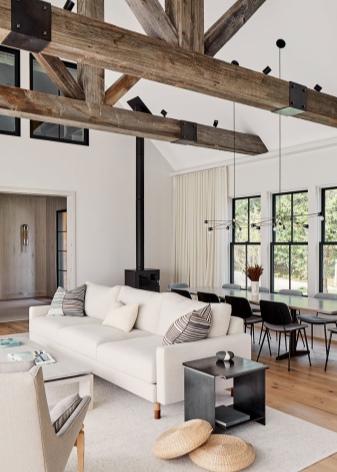
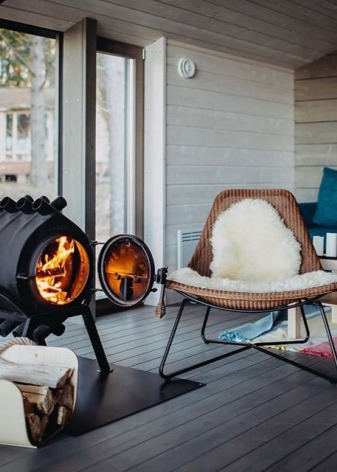
For all its seeming simplicity, it is not only perfectly compatible with "smart" technologies, but even stimulates their use, because panoramic windows rarely require a vent for ventilation. In full-fledged projects of our time, which are already aimed at the maximum comfort of people living here, you can often find automatic ventilation systems, built-in thoughtful microclimate control, natural lighting control systems, which themselves "understand" how much light the owners need, and how much the sun can give it at a given moment in time.
Thus, the barnhouse is an amazing combination of pastoral rustic style with a single element of chic and opulence in the form of a large living space. Nevertheless, this is no longer quite a strict classic, but a dwelling of a new type, which is ready in all respects to meet the needs of modern people, accustomed to the fact that technology creates comfort.

Beautiful examples
We will not talk too much about the appearance of barnhouses - they are all approximately the same, their design in the style description is spelled out quite clearly. The photo shows a model example, built from environmentally friendly natural materials, with a gable roof, covered with tiles, an attic floor on top of the main ground floor, huge panoramic windows at the end and a large open terrace.
Differences from the given sample may be in the cladding material, fewer windows or their other form, the presence of a balcony, and so on, but in general you are unlikely to confuse a barnhouse with any other style.
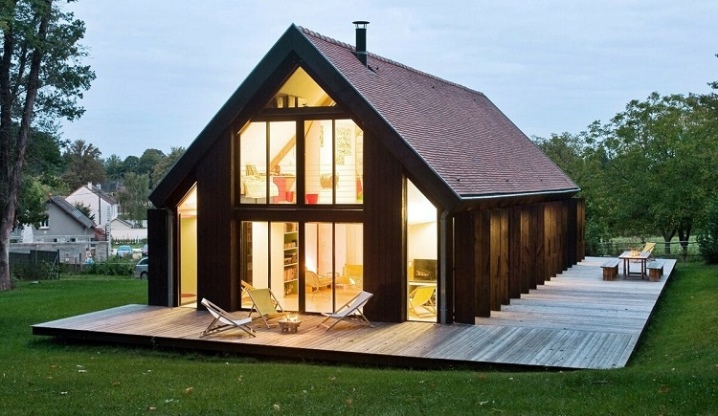
Let's say right away that for our fellow citizens, who are used to huddle in rather cramped apartments, the scope of the barnhouse with its missing interior partitions may even seem oppressive... In the second example, the owners practically completely abandoned visual zoning, and there is not even a second floor here. To some, such excessive freedom will seem uncomfortable, but if you do not like tightness, then you will be delighted with such a decision.
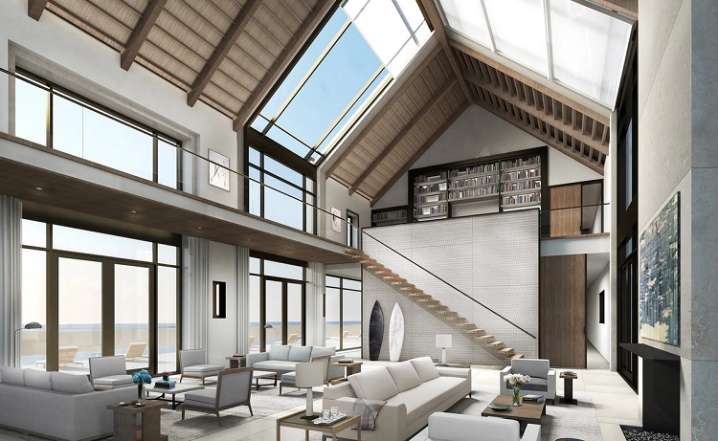
Although the barnhouse does not like room division, zoning can still be much more pronounced - for example, in the form of spacer beams. The next photo clearly shows how it might look - although nothing puts pressure on the psyche, you are no longer in an endless space. This solution creates the atmosphere of a kind of stylized restaurant and will suit many more.
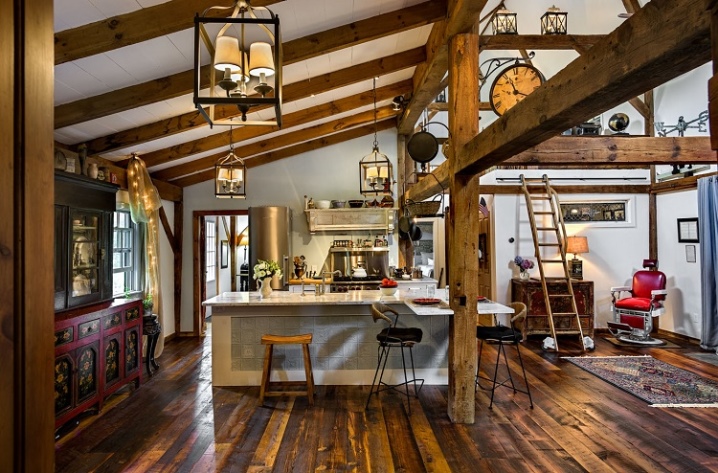













The comment was sent successfully.